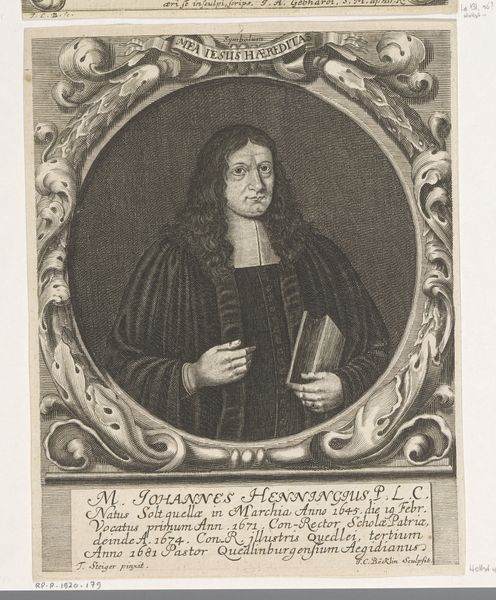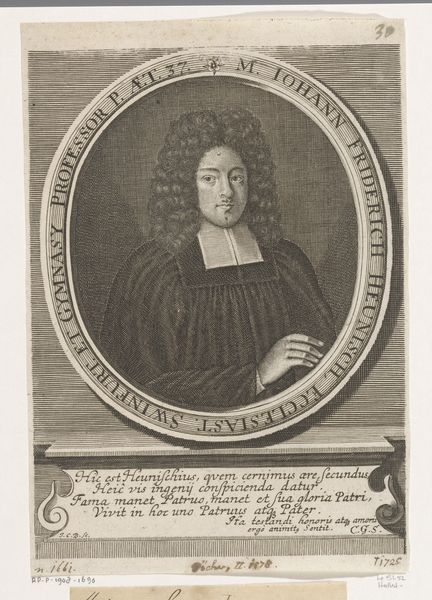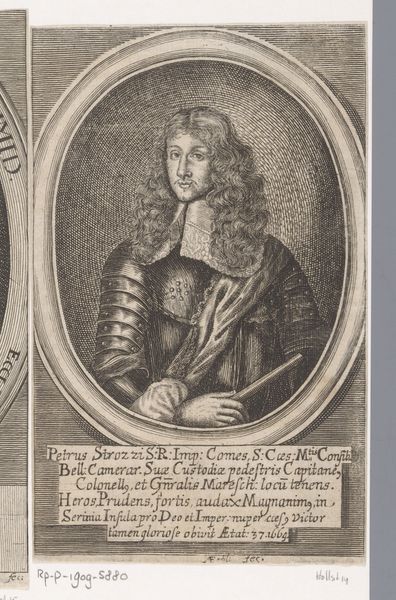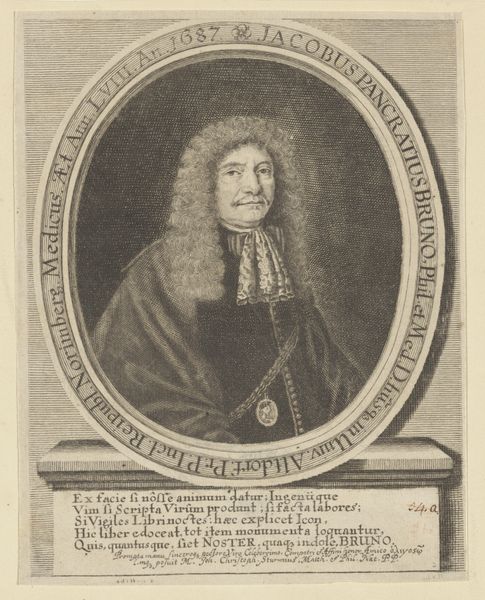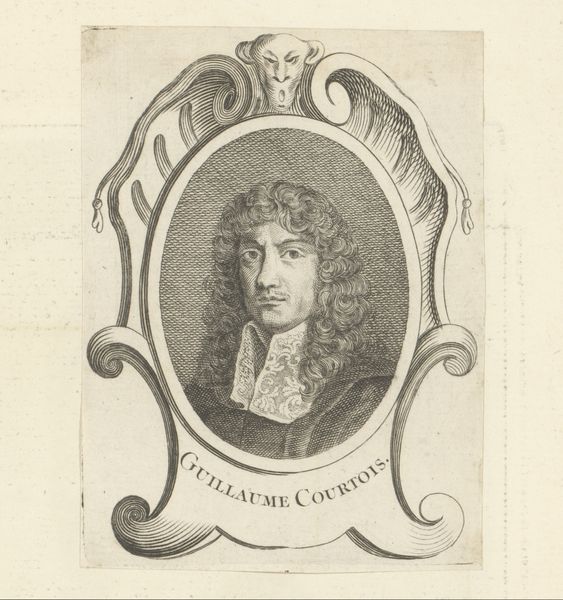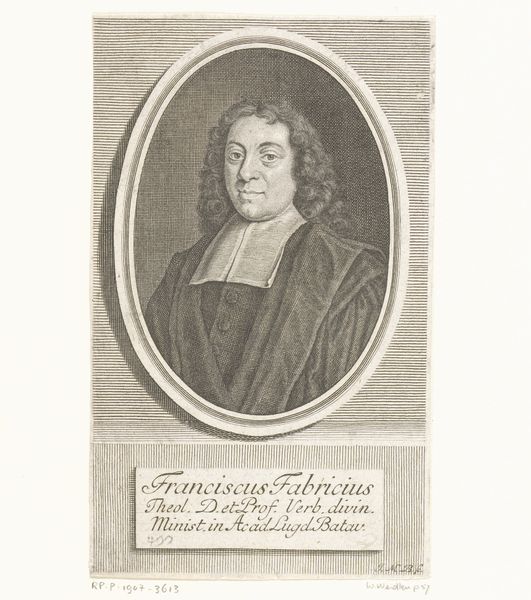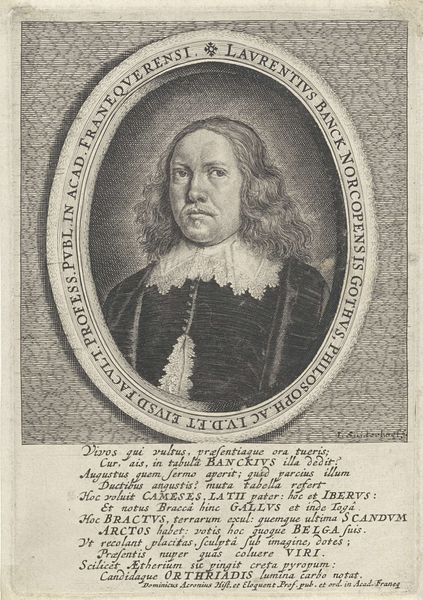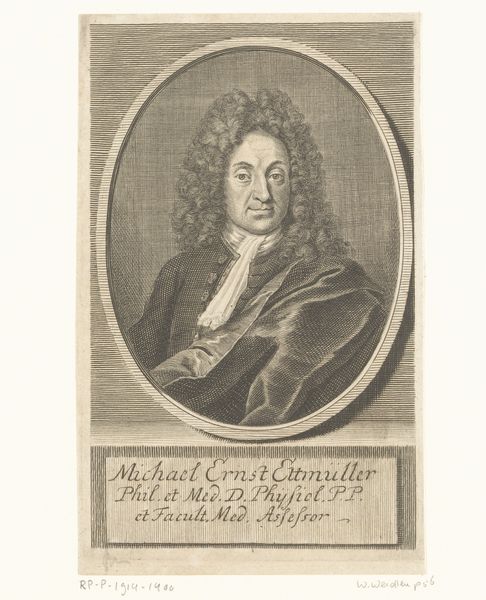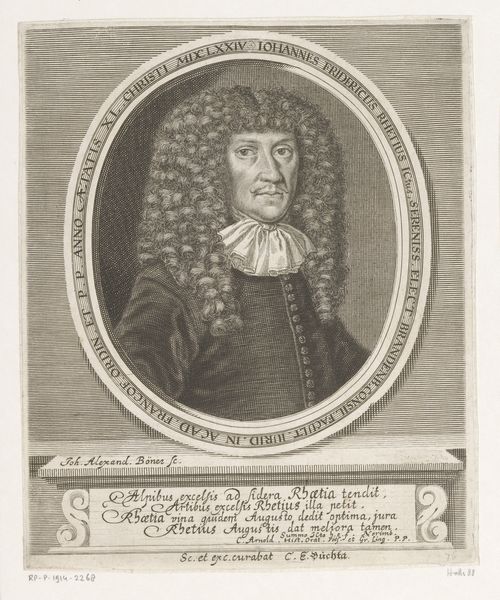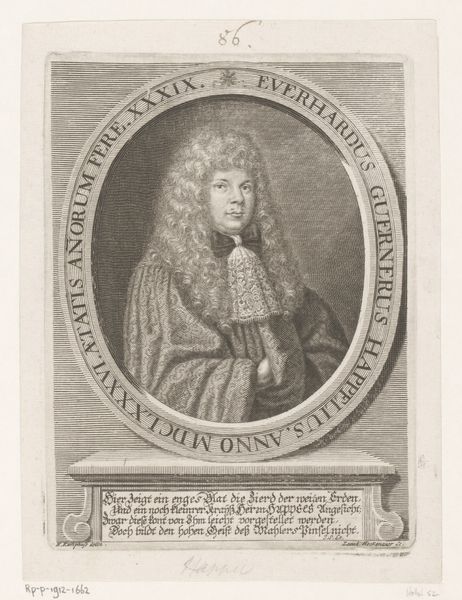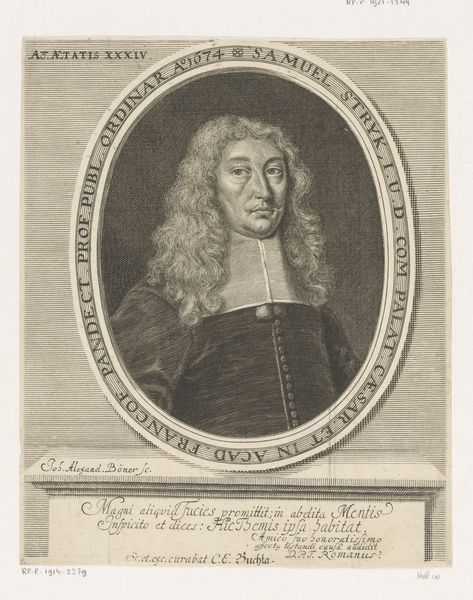
print, paper, ink, engraving
#
portrait
#
baroque
# print
#
paper
#
ink
#
engraving
Dimensions: height 154 mm, width 91 mm
Copyright: Rijks Museum: Open Domain
Editor: Here we have Johann Christoph Boecklin's "Portret van Christian Weise," made around 1708 or 1709. It's an engraving using ink on paper. The detail is remarkable. I'm curious about the relationship between the portrait itself and the elaborate framing and text. What's your perspective on this piece? Curator: I'm immediately drawn to the labor embedded in this object. Think about the skilled hand of the engraver, Boecklin, meticulously translating Weise's likeness into lines etched onto a metal plate. This process involved specialized tools, knowledge, and time, differentiating it from a quicker medium like drawing. Editor: So you're focusing on the process of creation? Curator: Absolutely. Engraving allowed for the creation of multiple impressions, effectively democratizing the image of Weise. Who was the target audience for these prints? Were they intended for personal collections, academic circles, or perhaps distributed more widely to assert Weise's authority as a rector? Furthermore, the inscription reinforces the idea of craftsmanship and the value placed on both visual and written representation during this era. Do you think the print challenges traditional divisions of "high" and "low" art by circulating imagery? Editor: That's an interesting question! The act of reproduction changes its cultural significance. So, is it fair to say the materials and labor of printmaking open the art up to interpretations beyond just its aesthetic value? Curator: Precisely. Considering the materials and processes helps us understand the social context of the artwork’s creation and consumption. Editor: I see, it encourages me to think of art less as just a final product and more as a reflection of its production and cultural function.
Comments
No comments
Be the first to comment and join the conversation on the ultimate creative platform.
